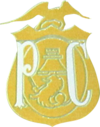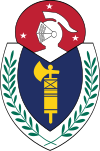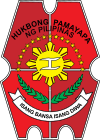This article includes a list of general references, but it lacks sufficient corresponding inline citations. (November 2023) |
| Chief of the Philippine Constabulary | |
|---|---|
| Puno ng Hukbóng Pamayapà ng Pilipinas Jefe de la Constabularía Filipina | |
   | |
| Department of National Defense (1938) Armed Forces of the Philippines (1935) | |
| Abbreviation | CPC |
| Reports to | Governor-General (1901–1935) President of the Philippine Commonwealth (1935–1942; 1945–1946) President
|
| Residence | Camp Crame, Quezon City |
| Appointer | Governor-General (until 1934) President (from 1934)
|
| Term length | 3 years unless remove or promoted to higher AFP position |
| Formation | 1901 |
| First holder | Captain Henry T. Allen, USA |
| Final holder | Major General Cesar Nazareno, PC/INP |
| Superseded by | Chief of the Philippine National Police (PNP) |
| Deputy | Deputy Chief of Philippine Constabulary |
The Chief of the Philippine Constabulary (Filipino: Puno ng Hukbóng Pamayapà ng Pilipinas; Spanish: Jefe de la Constabularía Filipina) was the head of the Philippine Constabulary, the former gendarmerie-type military police force of the Philippines from 1901 to 1991 and the predecessor to the modern-day Philippine National Police. It was founded in 1901 by Captain Henry T. Allen.[1] The position is invariably held by a PC Brigadier General until 1976 when it was held by a Major General. Lieutenant General can be attained if the PC officer was appointed Vice Chief of Staff, AFP or General if the PC officer is appointed to Chief of Staff, AFP.
On some occasions several Army and Air Force General officers were appointed Chief of Constabulary, where they go back to their original branch of service after their term.
- ^ "MODULE4 LEA101". www.coursehero.com. Retrieved 2023-11-27.